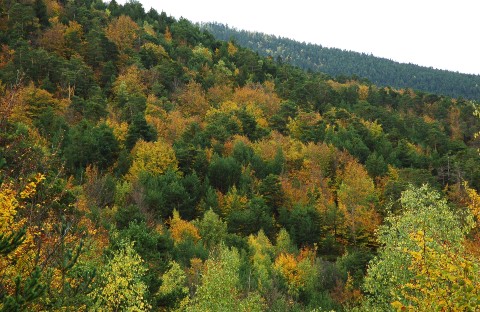
ONEforest study reveals positive impacts on tree growth and soil moisture in Catalonia's mixed forests
In response to the escalating frequency of drought events, ONEforest researchers have been investigating innovative approaches to enhance forest adaptability while safeguarding vital resources like soil moisture. A recent study titled "Close-to-nature management effects on tree growth and soil moisture in Mediterranean mixed forests," conducted by researchers from CTFC and CESEFOR, sheds light on the potential of close-to-nature forest management to promote resilient ecosystems.
The study, currently under review for publication in Forest Ecology and Management, examines the responses of tree growth and soil moisture to close-to-nature silvicultural itineraries. Researchers focused on 18 permanent sample plots, including nine paired plots representing a range of competition intensities and various forest types dominated by Quercus ilex, Castanea sativa, Quercus pubescens/petraea, Pinus pinea, and Pinus sylvestris.
By employing intensive monitoring techniques, including manual band dendrometers for intra-annual tree radial growth and hourly soil water content (SWC) measurements, the team evaluated the basal area increment (BAI) and annual/seasonal (May, June, July) radial increment rates (RIR) as indicators of tree growth. To uncover significant relationships between forest management and variables of interest, such as BAI, RIR, SWC, and competition intensity (Ci), Spearman correlation analyses and mixed-effects models were applied.
The findings reveal a positive yet weak correlation between close-to-nature management and tree growth, as both BAI and RIR displayed favorable responses to these practices. Interestingly, competition intensity (Ci) demonstrated a negative correlation with tree growth variables. However, the study did not detect clear species-specific tree growth responses to competition.
Comparing managed plots with control plots, the treatments exhibited an average increase of approximately 10% in SWC for stands dominated by Quercus ilex, Pinus sylvestris, and Pinus pinea. This notable enhancement was particularly prominent during the growing season. Additionally, the researchers developed a well-fitted model that utilized not only forest management and competition variables but also monthly SWC factors to predict seasonal RIR.
The results indicate that close-to-nature forest management practices may effectively reduce vulnerability to drought by promoting tree vitality and preserving soil moisture, at least in the short term (less than three years). These findings provide valuable insights into sustainable forest management approaches and hold great promise for fostering adapted forests in Mediterranean regions.
While the study awaits publication, its potential implications for forest management and ecosystem resilience have sparked optimism among researchers and environmental enthusiasts alike.

